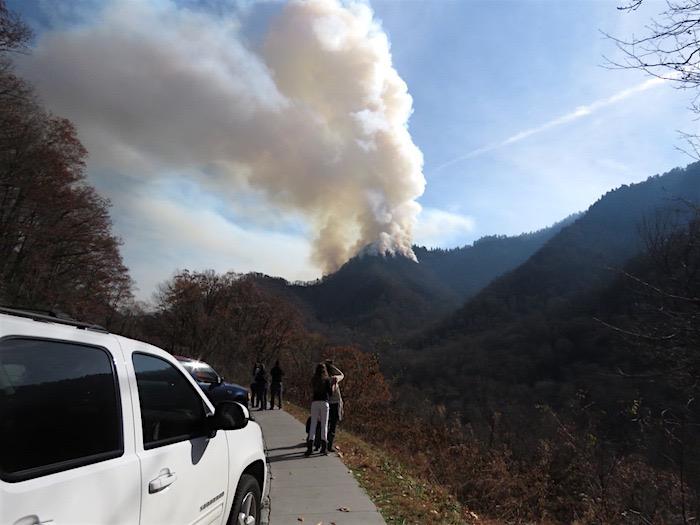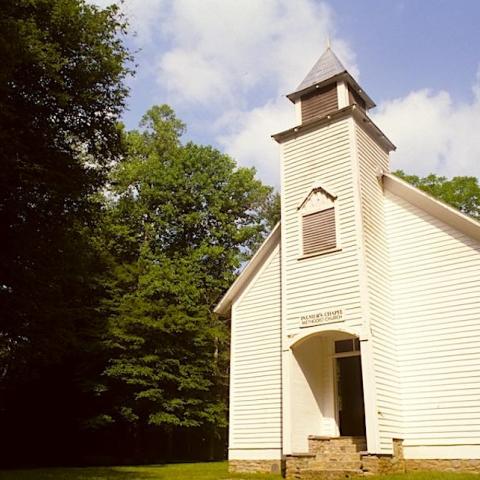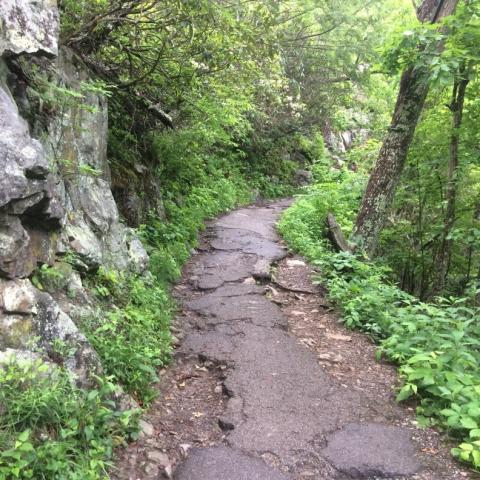
The Chimney Tops 2 Fire in November 2016 was blown into a conflagration by hurricane-force winds and extremely dry fuel/NPS
A federal judge has refused to dismiss a lawsuit against the National Park Service stemming from the deadly Chimney Tops 2 fire at Great Smoky Mountains National Park, holding that the park's Fire Management Plan required that area residents be notified of the wildfire.
When the Chimney Tops 2 fire was reported atop one of the many ridges of the national park late in the day on November 23, 2016, it covered only about 1.5 acres and park crews, due to darkness and steep cliffs in the area, planned to attack it the next morning, Thanksgiving. At the time, no one knew how it started, but there had been a park-wide ban on campfires and grills due to atypically dry conditions caused by a long-running drought.
Hurricane-force winds on November 28 into November 29 blew the fire up into a conflagration that swept through nearby Gatlinburg, Tennessee, trapping many in their homes and destroying or damaging approximately 2,500 structures.
Officials later said the wildfires originated from multiple locations, including an arson fire set at Chimney Tops inside the park, and from downed power line ignitions throughout the county. Fueled by extreme winds and dry weather, the fire storm was blamed for 14 deaths and 190 injuries. In all, losses attributed to the fire have been estimated at $500 million.
Michael B. Reed, Brittany H. Hyre Anculle, and Brittany Adkins separately brought lawsuits against the Park Service, alleging that the agency was "negligent in failing to monitor the wildfire overnight, failing to comply with command structure requirements, failing to adhere to mandatory fire management policies and requirements, and failing to warn Park neighbors."
The $13.65 million lawsuit (attached below) filed by Reed, whose wife and two young daughters died in the fire, brought wrongful death claims against the agency. In the nearly 150-page filing, the man claimed the Park Service and its fire officer, Greg Salansky, underestimated the fire's potential after it was spotted.
"While Salansky and other Park officials believed the small and smoldering fire would be controlled inside the Park, eighty (80)-years of built-up ground fuels, months of severe drought conditions and a Saturday morning, November 26, 2016 National Weather Service (“NWS”) forecast of high-winds foretold a substantial change in The Chimney Tops 2 Fire’s behavior," the lawsuit charged.
While the government sought to have the lawsuits dismissed, arguing that "the claims all fall within the discretionary function exception to the government’s waiver of sovereign immunity under the (Federal Tort Claims Act)," Judge Thomas Phillips disagreed, writing that sections of the Fire Management Plan "are all phrased as requirements to act and notify Park neighbors of wildfire dangers."
Dozens of insurance companies also are suing the federal government for hundreds of millions of dollars over the fire.




 Support Essential Coverage of Essential Places
Support Essential Coverage of Essential Places







Comments
My husband and I and another couple were there on vacation had no earthly idea we were surrounded by fire. We knew something was amiss but couldn't figure it out. So we called the people we rented the cabin from and they said these words "oh there's fire everywhere and we've already gone and we forgot to call y'all. My life flashed before my eyes, our car was almost too hot to steer, and on top of all of that we had driven the wrong way and was turned around by park rangers and had to go back through where we had already narrowly escaped death. I was in a total panic, I'm still livid and I have the phone call recorded. Yes I plan to sue. ABSOLUTELY